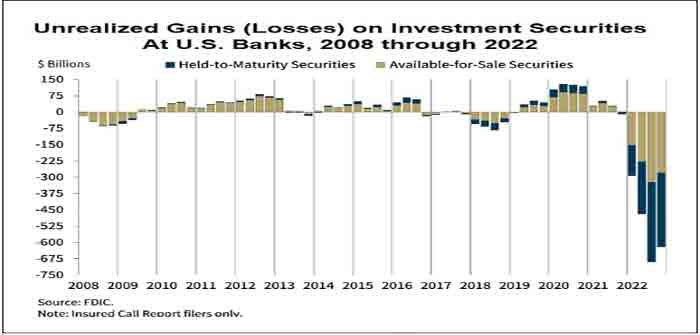
by Pam Martens and Russ Martens at Wall Street on Parade
Senator Sherrod Brown (D-OH), the Chair of the Senate Banking Committee, will convene a hearing this morning at 10 a.m. to take testimony from federal bank regulators on why the second and third largest bank failures in U.S. history occurred within two days of each other this month. (A number of other regional banks have seen their share prices plunge this month.)
The two banks that failed and were taken over by the Federal Deposit Insurance Corporation (FDIC) were Silicon Valley Bank (SVB) and Signature Bank. Both had experienced bank runs in March and both had extreme exposure to uninsured deposits. One of the witnesses at today’s hearing, Martin Gruenberg, Chair of the Federal Deposit Insurance Corporation (FDIC), explains as follows in his written testimony for today’s hearing:
“A common thread between the failure of SVB and the failure of Signature Bank was the banks’ heavy reliance on uninsured deposits. As of December 31, 2022, Signature Bank reported that approximately 90 percent of its deposits were uninsured, and SVB reported that 88 percent of its deposits were uninsured. The significant proportion of uninsured deposit balances exacerbated deposit run vulnerabilities and made both banks susceptible to contagion effects from the quickly evolving financial developments. One clear takeaway from recent events is that heavy reliance on uninsured deposits creates liquidity risks that are extremely difficult to manage, particularly in today’s environment where money can flow out of institutions with incredible speed in response to news amplified through social media channels.”
Gruenberg has included a chart in his written testimony that is nothing short of stunning. (See chart above.) It shows that the unrealized losses on investment securities at federally-insured U.S. banks during the 2008 financial crisis were less than $75 billion while at the end of the fourth quarter of 2022 they were over $600 billion.
You are no doubt asking yourself how 2008 could have been the worst financial crisis since the Great Depression if banks had less than $75 billion in unrealized losses on their investment securities. That’s because the mega banks on Wall Street were highly interconnected, understood how highly-leveraged each one was, and backed away from extending credit as the panic started to spread. The official report from the Financial Crisis Inquiry Commission (FCIC) reveals the following about the leadup to the 2008 crash:…
______________
You can watch the Senate Banking here by clicking HERE
Continue Reading